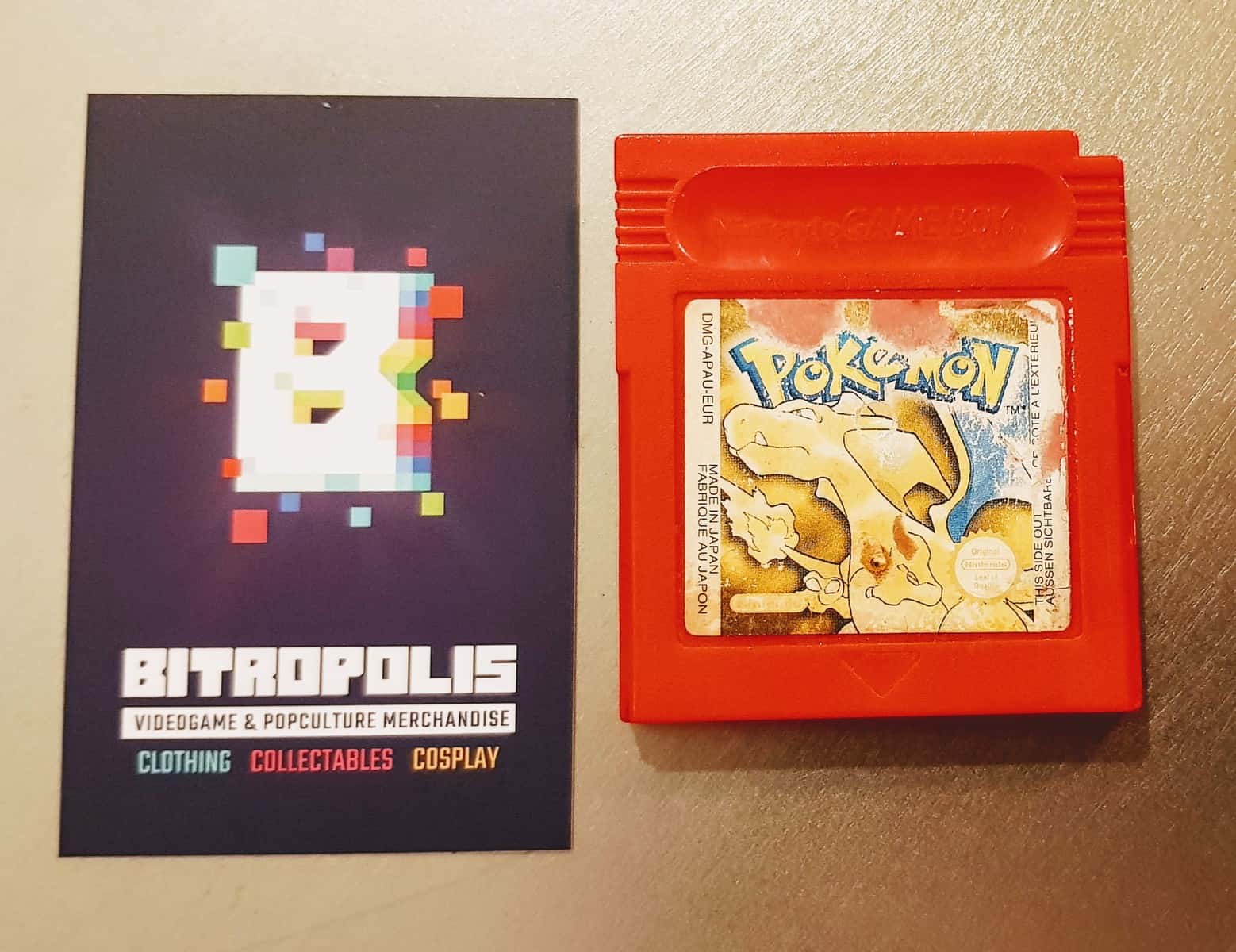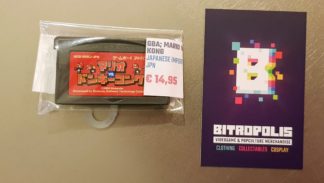Game Boy Pokémon Red
€14,95
Red and Blue are played in a third-person view, overhead perspective and consist of three basic screens: an overworld, in which the player navigates the main character; a side-view battle screen; and a menu interface, in which the player configures his or her Pokémon, items, or gameplay settings.
The player can use his or her Pokémon to battle other Pokémon. When the player encounters a wild Pokémon or is challenged by a trainer, the screen switches to a turn-based battle screen that displays the engaged Pokémon. During a battle, the player may select a maneuver for his or her Pokémon to fight using one of four moves, use an item, switch his or her active Pokémon, or attempt to flee. Pokémon have hit points (HP); when a Pokémon’s HP is reduced to zero, it faints and can no longer battle until it is revived. Once an enemy Pokémon faints, the player’s Pokémon involved in the battle receive a certain number of experience points (EXP). After accumulating enough EXP, a Pokémon will level up. A Pokémon’s level controls its physical properties, such as the battle statistics acquired, and the moves it has learned. At certain levels, the Pokémon may also evolve. These evolutions affect the statistics and the levels at which new moves are learned (higher levels of evolution gain more statistics per level, although they may not learn new moves as early, if at all, compared with the lower levels of evolution).
Catching Pokémon is another essential element of the gameplay. While battling with a wild Pokémon, the player may throw a Poké Ball at it. If the Pokémon is successfully caught, it will come under the player’s ownership. Factors in the success rate of capture include the HP of the target Pokémon and the type of Poké Ball used: the lower the target’s HP and the stronger the Poké Ball, the higher the success rate of capture. The ultimate goal of the games is to complete the entries in the Pokédex, a comprehensive Pokémon encyclopedia, by capturing, evolving, and trading to obtain all 151 creatures.
Pokémon Red and Blue allow players to trade Pokémon between two cartridges via a Game Link Cable. This method of trading must be done to fully complete the Pokédex since certain Pokémon will only evolve upon being traded and each of the two games have version-exclusive Pokémon. The Link Cable also makes it possible to battle another player’s Pokémon team. When playing Red or Blue on a Game Boy Advanceor SP, the standard GBA/SP link cable will not work; players must use the Nintendo Universal Game Link Cable instead. Moreover, the English versions of the games are incompatible with their Japanese counterparts, and such trades will corrupt the save files, as the games use different languages and therefore character sets.
As well as trading with each other and Pokémon Yellow, Pokémon Red and Blue can trade Pokémon with the second generation of Pokémon games: Pokémon Gold, Silver, and Crystal. However, there are limitations: the games cannot link together if one player’s party contains Pokémon or moves introduced in the second generation games. Also, using the Transfer Pak for the Nintendo 64, data such as Pokémon and items from Pokémon Red and Blue can be used in the Nintendo 64 games Pokémon Stadium and Pokémon Stadium 2. Red and Blue are incompatible with the Pokémon games of the later “Advanced Generation” for the Game Boy Advance or GameCube.
| Developer(s) | Game Freak |
|---|---|
| Publisher(s) | Nintendo |
| Director(s) | Satoshi Tajiri |
| Producer(s) | Shigeru Miyamoto Takashi Kawaguchi Tsunekazu Ishihara |
| Designer(s) | Satoshi Tajiri |
| Artist(s) | Ken Sugimori |
| Writer(s) | Satoshi Tajiri Ryosuke Taniguchi Fumihiro Nonomura Hiroyuki Jinnai |
| Composer(s) | Junichi Masuda |
| Series | Pokémon |
| Platform(s) | Game Boy |
| Release | Red and Green Blue (Japan) Red and Blue |
| Genre(s) | Role-playing |
| Mode(s) | Single-player, multiplayer |
Uitverkocht




